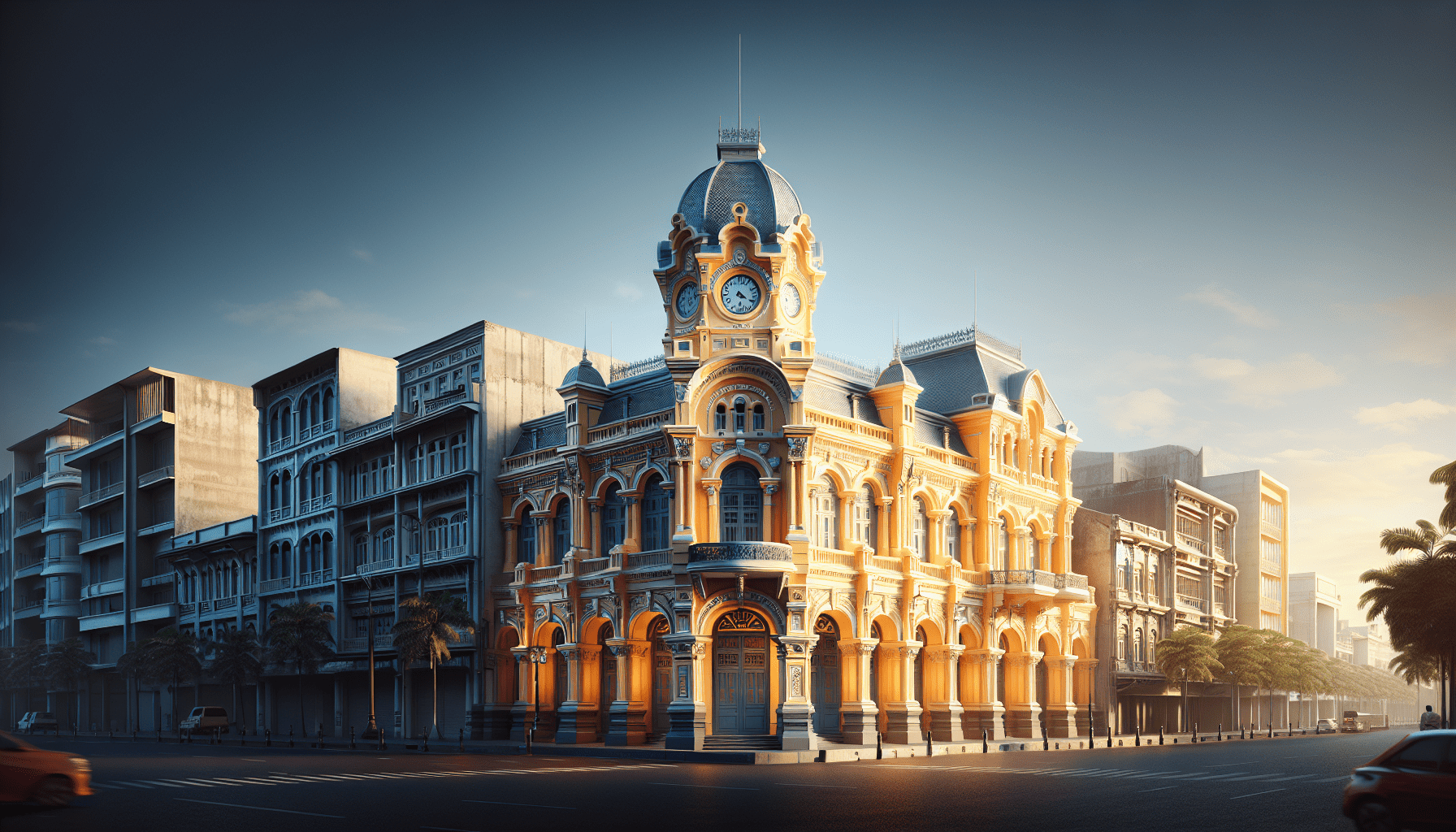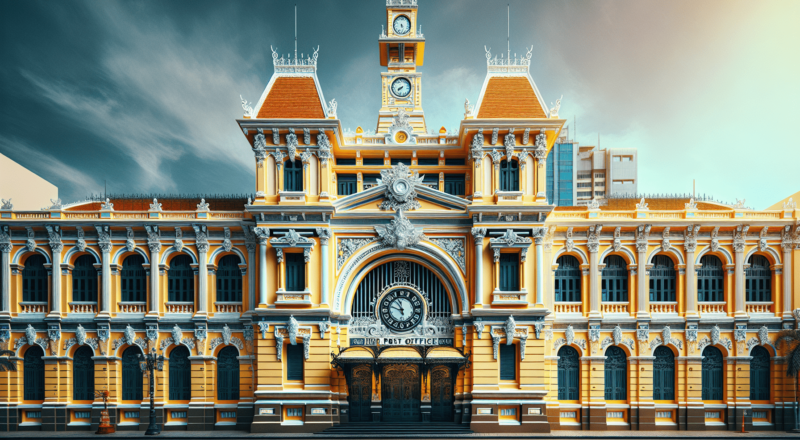Have you ever wandered through a city and found yourself surprised by its hidden treasures? In Ho Chi Minh City, you don’t have to look far to discover beautiful architectural gems that tell the story of its vibrant history and rich culture.
Understanding the Architectural Landscape of Ho Chi Minh City
Ho Chi Minh City, formerly known as Saigon, is a bustling metropolis that beautifully blends the old with the new. Its skyline is dominated by modern skyscrapers, yet the charm of colonial-era structures and traditional buildings remains intact. To truly appreciate the city’s unique charm, you’ll want to pay attention to the less obvious architectural sites that often go unnoticed.
The Impact of History on Architecture
The architectural identity of Ho Chi Minh City has been influenced by various historical events, particularly during the French colonial period. The result is a rich tapestry of styles ranging from Gothic to Renaissance and even Asian influences.
The Dance of Tradition and Modernity
Walking through the streets, you’ll notice this interplay of traditional Vietnamese elements alongside contemporary designs. This blend highlights the city’s dynamic growth while maintaining a connection to its past, making it a fascinating place for architecture enthusiasts.
The Hidden Architectural Gems
Let’s take a closer look at some of the lesser-known architectural wonders that you might find captivating. Each has its own story, and visiting them is like flipping through the pages of a living history book.
1. The Saigon Central Post Office
A Timeless Beauty
You may have seen the iconic Saigon Central Post Office in pictures, but standing before its grand façade is an experience in itself. Designed by the renowned French architect Gustave Eiffel, this building combines Gothic, Renaissance, and French architectural styles, offering a remarkable glimpse into the past.
Key Features to Admire
- Mosaic Tiles: The interior boasts stunning mosaic tiles depicting the map of Vietnam. Take a moment to appreciate these intricate artworks as you wander through.
- High Ceilings: The lofty ceilings create an airy atmosphere, making it a delight to spend time inside.
- Historical Significance: It has been in operation since 1891, serving as a hub for communication and connection.
2. The Jade Emperor Pagoda
A Spiritual Retreat
Tucked away from the bustling streets, The Jade Emperor Pagoda is an oasis of tranquility you shouldn’t miss. Built in 1909, this vibrant temple is dedicated to various deities and is known for its intricate carvings and colorful statues.
Architectural Details to Note
- Elaborate Roof Design: The pagoda features a beautiful tiled roof adorned with dragons, symbolizing power and protection.
- Intricate Statues: Don’t rush through; take your time to observe the stunning statues that illustrate various aspects of Vietnamese mythology.
- Peaceful Gardens: The surrounding gardens provide a peaceful retreat, perfect for some quiet reflection amidst the city’s hustle.
3. The Saigon Opera House
A Cultural Landmark
The Saigon Opera House, also known as the Municipal Theatre, stands as a testament to French colonial architecture. Constructed in 1900, this building is not only a performance venue but also an architectural masterpiece.
What to Look For
- Grand Facade: The building’s grand façade is intricately adorned with columns and sculptures, making it a great spot for photos.
- Interior Decor: Inside, the opulent décor is equally impressive, showcasing chandeliers, plush seats, and impressive ceiling details.
- Performances: If you have the chance, catch a local performance to truly appreciate this venue’s cultural significance.
4. Binh Tay Market
A Contrast of Styles
While primarily known for its bustling marketplace, Binh Tay Market in Cholon also showcases beautiful Chinese architectural influences. The market is a fantastic place to explore local life and indulge in Vietnamese cuisine.
Architectural Highlights
- Vibrant Colors: The structure’s vibrant colors and tiles reflect traditional Chinese architecture, creating a lively atmosphere.
- Cultural Significance: The market serves as a reminder of the Chinese community’s influence on Ho Chi Minh City, making it a culturally rich spot.
- Traditional Craftsmanship: Look for the intricate wooden carvings that embellish various parts of the market.
5. Thien Hau Temple
An Architectural Wonder
Thien Hau Temple, dedicated to the sea goddess, is another captivating hidden gem. Its intricate design and serene atmosphere make it a must-visit for anyone interested in religious architecture.
Features to Appreciate
- Detailed Roofs: The multi-tiered roofs adorned with dragon statues are a stunning sight that tells of its spiritual significance.
- Incense Offerings: As you explore, you’ll notice the fragrant incense and offerings made by worshippers, adding to the temple’s mystical ambiance.
- Cultural Events: If you can, attend a local festival to witness the temple’s vibrant community celebrations.
6. The Museum of Vietnamese History
Architectural Elegance
The Museum of Vietnamese History may not be as hidden as the others, but its architectural elegance often gets overshadowed by its collections. Located within the beautiful Botanical Gardens, the building is a fine example of French Colonial architecture.
What Makes It Unique
- Beautiful Courtyard: Take a stroll in the museum’s courtyard filled with lush greenery—a perfect place to unwind after exploring the exhibits.
- Collection: Inside, you’ll find fascinating artifacts that represent Vietnam’s long and storied past.
- Elegant Design: The exterior is just as impressive as the interior, with high arches and large windows that provide ample natural light.
7. Cao Dai Temple
An Eclectic Mix
Cao Dai Temple, located slightly outside the city in Tay Ninh, offers a unique architectural blend. This colorful temple represents the Cao Dai faith, a religious movement that combines elements of various religions.
Architectural Marvels
- Vivid Colors: The exterior is a riot of colors with intricate carvings, making it a visually stunning site to visit.
- Symbolism Everywhere: Every corner of the temple holds symbolic meaning, from the eye above the entrance to the sculpted deities adorning the walls.
- Spiritual Atmosphere: The temple is known for its meditative environment, creating a truly unique experience for visitors.
8. The Ben Thanh Market
A Cultural Staple
Ben Thanh Market is not just another bustling market; it’s a vital part of the city’s history and architecture. This iconic landmark dates back to the 17th century and serves as a central hub for trade and commerce.
Elements to Appreciate
- Colonial Architecture: The market features distinct colonial architecture, with large arches and a central clock tower that stands as a city symbol.
- Vibrant Atmosphere: Inside, the lively atmosphere is filled with vendors selling everything from traditional handicrafts to souvenirs.
- Community Hub: Beyond shopping, this market is a social hub where locals and tourists come together.
9. The Fine Arts Museum
An Artistic Landmark
Housed in a stunning colonial building, the Fine Arts Museum is a haven for art lovers and architecture enthusiasts alike. It showcases a collection of Vietnamese art ranging from ancient to contemporary.
Architectural Highlights
- Spacious Galleries: The high ceilings and large windows create an inviting space for art exhibits, allowing natural light to enhance the experience.
- Historical Significance: The building itself has a rich history, having served different purposes before becoming a museum.
- Art and Architecture: The combination of both art and architecture makes a visit here particularly enriching.
10. The Reunification Palace
A Symbol of Change
Formerly known as the Independence Palace, this is a symbol of Vietnam’s period of reunification. Its architectural design reflects the era of its construction in the 1960s, blending modern and traditional elements.
Elements to Notice
- Modernist Design: The building features clean lines and geometric shapes typical of modernist architecture, creating a striking visual appeal.
- Historical Rooms: Inside, you’ll find rooms preserved in their original state, offering a glimpse into Vietnam’s political history.
- Lush Gardens: The surrounding gardens provide a serene backdrop, featuring fountains and landscapes that encourage quiet contemplation.
Why Seek Out These Hidden Gems?
Visiting these hidden architectural gems gives you a deeper understanding of Ho Chi Minh City’s culture. It allows you to appreciate the stories behind the buildings and the people who inhabit them.
Connecting with Local Culture
Each architectural site tells a story of the past, making them far more than just beautiful structures. When you visit, you connect with the local culture, engage with the community, and witness the evolving narrative of the city.
Tips for Your Architectural Journey
As you plan to uncover the hidden gems of Ho Chi Minh City, here are some helpful tips to ensure you get the most out of your adventure:
1. Consider Your Timing
Visiting these sites early in the morning or late afternoon can provide a more pleasant experience as crowds tend to be thinner.
2. Don’t Rush
Take your time to absorb the stories behind each structure. Allow your curiosity to guide you and ask locals about the significance of what you see.
3. Enjoy Local Cuisine
Many of these hidden gems are near bustling markets and eateries. Treat yourself to local dishes as you delve into the architectural wonders.
4. Engage with Locals
Don’t hesitate to strike up a conversation with locals; they can offer valuable insights and stories that you won’t find in guidebooks.
5. Bring a Camera
Capture the stunning details and moments that speak to you. The light at different times of the day can highlight different aspects of the architecture beautifully.
In Conclusion
Finding the hidden architectural gems in Ho Chi Minh City is about embracing the essence of the city. Each building you visit tells a piece of its history, contributing to the vibrant narrative that continues to evolve today.
By seeking out these less obvious places, you’ll enrich your understanding of Vietnam’s complex tapestry of culture and architecture. So, as you wander through the streets of this incredible city, keep your eyes peeled for the stories that each gem holds!

